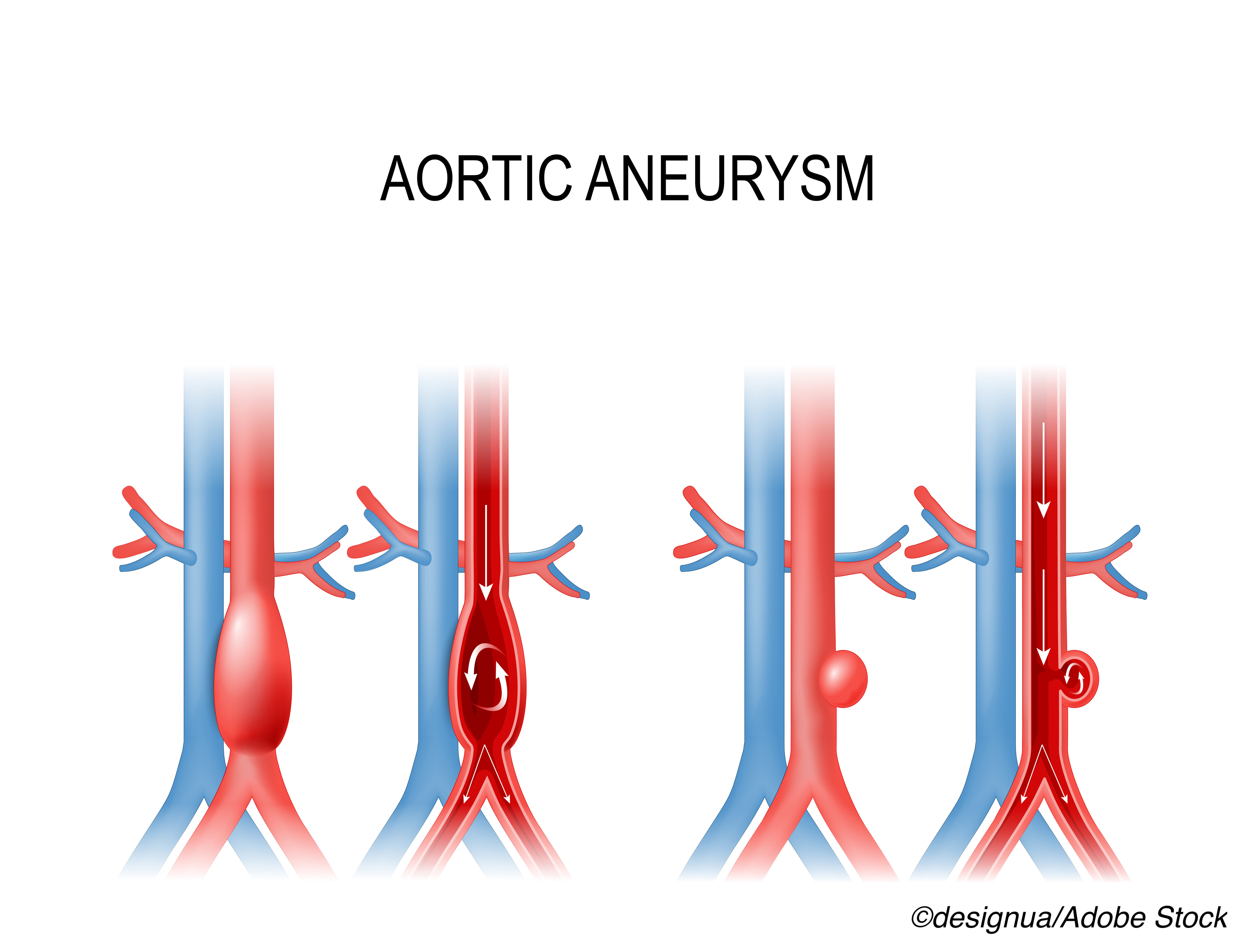The use of fluoroquinolones — which are commonly prescribed antibiotics — is associated with an increased risk of aortic aneurysm, researchers reported.
A retrospective analysis of health insurance claims found the risk was consistent across all adults aged 35 years or older, regardless of sex or comorbidities. The study, led by Emily R. Newton, MD, Department of Surgery, University of North Carolina at Chapel Hill, Chapel Hill, was published in JAMA Surgery.
“Because of the broad-spectrum coverage, easy dosing, and historically low adverse effect profile, this antibiotic class is frequently prescribed,” Newton and colleagues explained. However, recent international studies have called the safety of this class of drugs into question, particularly the possibility of an association of these antibiotics with acute aortic aneurysm and dissection development.
No U.S. studies have examined this association, although an FDA warning was updated in 2018 recommending that fluoroquinolone use should be limited in high-risk populations, with high risk defined as the presence of known cardiovascular disease or aneurysms, certain genetic disorders that involve blood vessels, high blood pressure, and old age.
Newton and colleagues evaluated the incidence of aortic aneurysm and dissection formation after fluoroquinolone use.
Using MarketScan health insurance claims, the authors conducted a cohort study that included 27,827,254 adults (47,596,545 antibiotic prescription fills) who had no previous history of aortic aneurysm or dissection, or recent antibiotic exposure or hospitalization. Antibiotic prescription fills included an oral fluoroquinolone or a comparator antibiotic (amoxicillin-clavulanate, azithromycin, cephalexin, clindamycin, and sulfamethoxazoletrimethoprim) between Jan. 1, 2005, and Sept. 30, 2017.
The study’s primary outcome was the 90-day incidence of aortic aneurysm and dissection (with inverse probability of treatment weighting in Cox regression used to estimate the association between fluoroquinolone fill and 90-day aneurysm incidence).
Of the prescription fills included in the study, 19% were fluoroquinolones, while the remainder were comparator antibiotics. Before weighting the incidence rate of newly diagnosed aneurysm was 7.5 cases per 10,000 fills for fluoroquinolone use versus 4.6 cases per 10,000 fills for comparator antibiotic use. And after weighting for demographics and comorbidities, fluoroquinolone fills were associated with increased incidence of aneurysm formation (hazard ratio [HR], 1.20; 95% CI, 1.17-1.24).
Additionally, fluoroquinolone fills versus comparator antibiotics were associated with higher risks of 90-day incidence of:
- Abdominal aortic aneurysm (HR, 1.31; 95% CI, 1.25-1.37).
- Iliac artery aneurysm (HR, 1.60; 95% CI, 1.33-1.91).
- Other abdominal aneurysm (HR, 1.58; 95% CI, 1.39-1.79).
- Thoracic aneurysm (HR, 1.05 (0.98-1.13).
- Aortic dissection (HR, 1.09 (0.95-1.24).
The only case in which fluoroquinolone fills were not associated with an increased aneurysm risk was that of thoracoabdominal aneurysm (HR, 0.90 [0.68-1.20]).
Finally, adults were more likely to undergo aneurysm repair (HR, 1.88; 95% CI, 1.44-2.46).
The association between fluoroquinolone and aneurysm was consistent across age groups — 18-34 years: HR, 0.99 (95% CI, 0.83-1.18); 35-49 years: HR, 1.18 (95% CI, 1.09-1.28); and 50-64 years: HR, 1.24 (95% CI, 1.19-1.28) – while minimal differences were seen when broken down by sex and comorbidities of diabetes, hypertension, and hyperlipidemia.
“Although the overall incidence of aneurysm formation detected in the present study was low, the aneurysm incidence after a fluoroquinolone fill was 20% higher than that of comparator antibiotics, and consistent among all adults age 35 years or older,” concluded Newton and colleagues, who also suggested that fluoroquinolones “should be used with caution among individuals aged 35 years or older, regardless of sex or comorbidities.”
They also suggested that the current FDA black box warning that appears on fluoroquinolone labels may need to be expanded to include younger adults and other risk factors, and that further studies are needed to understand the mechanisms involved in this association between fluoroquinolone use and aneurysm.
In a commentary accompanying the study, Amanda C. Filiberto, MD, and Gilbert R. Upchurch Jr, MD, both of the Department of Surgery, University of Florida College of Medicine, Gainesville, noted that while Newton and colleagues summarized the literature regarding studies with results consistent with their findings, other recent studies have been “contradictory.”
For example, a 2020 study out of the US found an increased relative rate of aortic aneurysm and aortic dissection associated with fluoroquinolone use in patients with pneumonia, but not those with urinary tract infections.
Still, “this large cohort study of a US population suggests it is time once again to rethink the use of this class of antibiotics for patients with or without aortic disease,” wrote Filiberto and Upchurch. “We wholeheartedly agree with the authors that fluoroquinolone use ’should be pursued with caution in all adults, not just in high-risk individuals,’ and we encourage the FDA to broaden their warning recommendations.”
-
Be aware that fluoroquinolones appear to be associated with an increased risk of aortic aneurysm.
-
The increased risk observed in this retrospective analysis was consistent among all age groups over 35, regardless of sex or comorbidities.
Michael Bassett, Contributing Writer, BreakingMED™
The authors had nothing to disclose.
Cat ID: 102
Topic ID: 74,102,730,102,914,125,190,192,925



